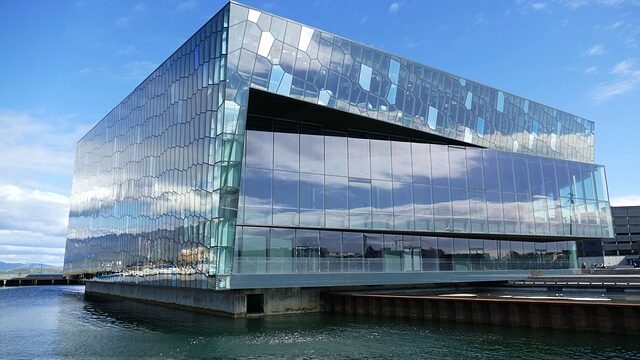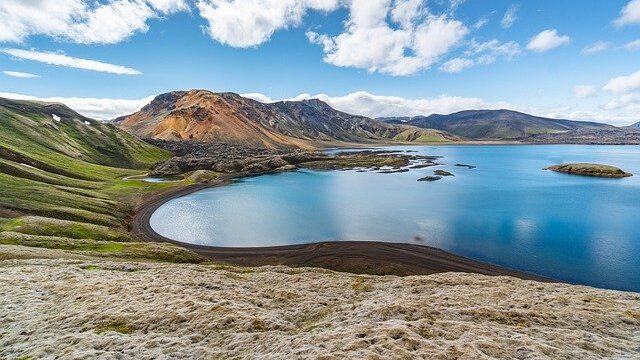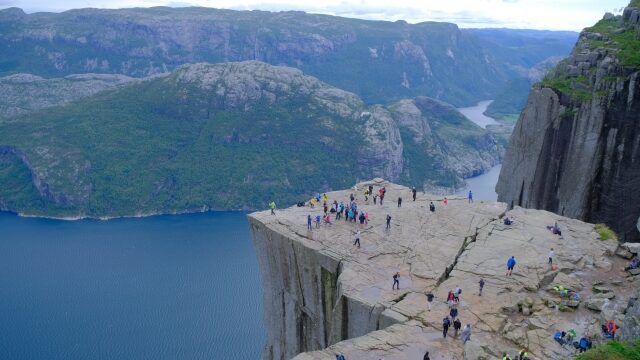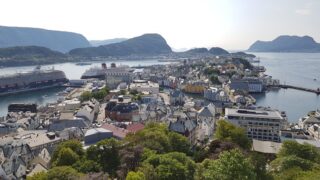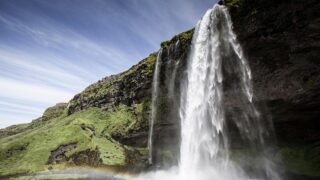Iceland, an island nation located in the North Atlantic Ocean, is also known as one of the most volcanically active countries in the world.
A spectacle unique to Iceland’s volcanic activity are the geysers that spew hot groundwater with great force.
There are many geysers of various sizes in Iceland, and the Geysir geyser shown here is the largest of them all.
In this article, I will provide detailed information about the Geysir geyser, including the size and frequency of its fountains, as well as tours that allow visitors to see the geyser up close.
Geysir geyser, the largest in Iceland
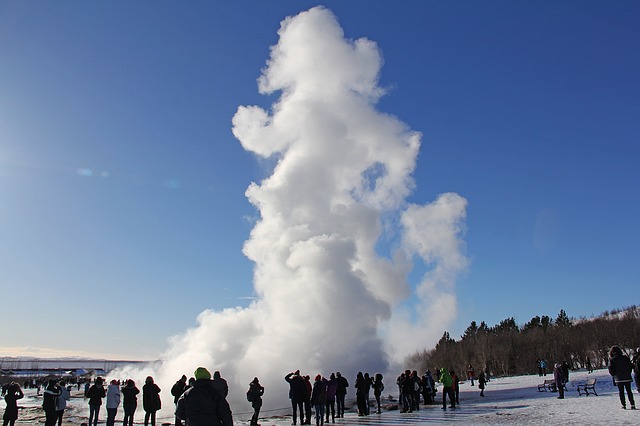
Located in the North Atlantic Ocean, Iceland may give the impression of being a country covered in glaciers.
However, Iceland is actually a volcanically active country, similar to Japan, with geysers and hot springs springing up all over the place.
The Geysir geyser is said to be the most famous geyser in Iceland, a country known for its volcanic activity.
The Geysir geyser is one of the geysers located in the Heukadalur valley in southeastern Iceland.
There are numerous geysers in the Heukadalur valley that were created by crustal movement, and the geothermal area that includes the Geysir geysers is collectively called Geysir.
Geysir geyser is the largest geyser in Iceland, and the boiling water that erupts from it rises up to a maximum height of 70 meters.
The Geysir geyser is one of the most famous geysers in Iceland, and it is also the origin of the word “geyser,” which means “geyser” in English.
One of the most popular tourist attractions in the Golden Circle
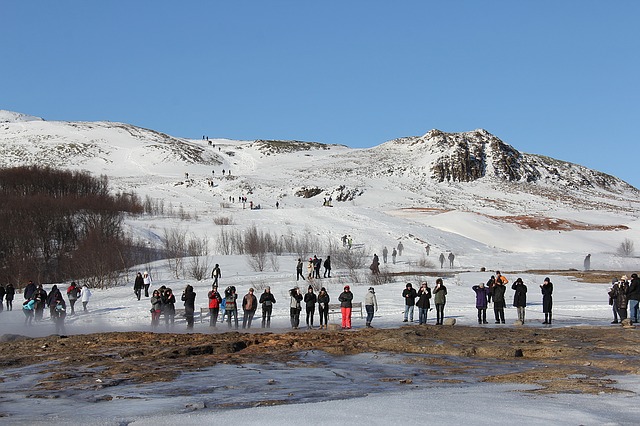
The Geysir geyser is located approximately 80 km northeast of Reykjavik, the capital of Iceland.
Due to its easy accessibility, sightseeing tours are organized, with the most famous being the “Golden Circle,” Iceland’s main sightseeing route.
The Golden Circle tour takes visitors to three of Iceland’s most famous sights: the World Heritage Site of Thingvellir National Park, the Gutröfoss Waterfall, and the Geysir geyser, which I will introduce here.
The Geysir geyser is surrounded by a walking trail that allows visitors to see the geyser up close.
The spectacle of the roaring, hot water rising high into the sky is said to be as powerful as the pulsating pulse of the earth.
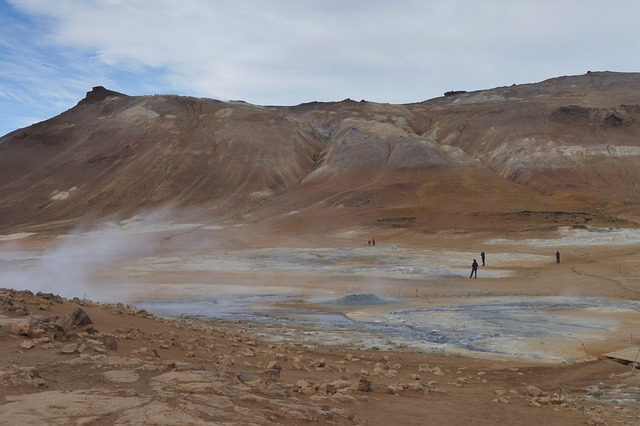
The Geysir geothermal area also contains other geysers of various sizes, as well as hot springs gushing from the geothermal heat of the volcano.
The geothermal heat also discolors the minerals in the ground, giving the area around the Geysir geysers a unique hue.
For information on other sights along the Golden Circle, please refer to the following articles.

Geysir geyser is currently inactive
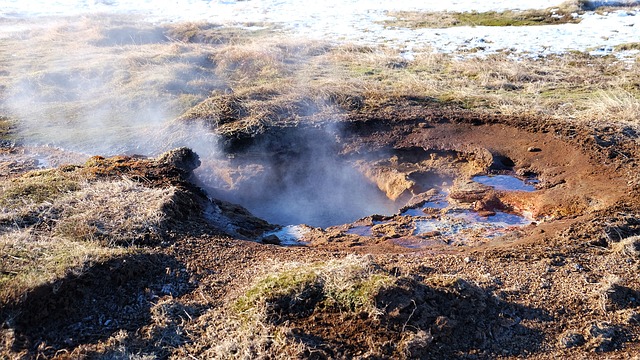
Although we have introduced the Geysir geyser so far, its activity is actually weakening now, and it is difficult to witness its eruption.
Geyser activity is inevitably affected by various natural conditions such as geothermal heat and crustal movement, causing fluctuations in the activity cycle.
Geysir geyser activity is said to have peaked around the 19th century, and since the tectonic movement in 1935, the frequency of activity has gradually decreased.
However, this does not mean that it has completely stopped being active, as it still erupts on average three times a day.
Nevertheless, with a frequency of around three eruptions per day, it is a matter of luck whether or not visitors can witness the eruptions during their tour.
Therefore, the main attraction in the current tour is the Strokkur geyser in the same area, rather than the Geysir geyser.
Strokkur Geyser is now the main attraction
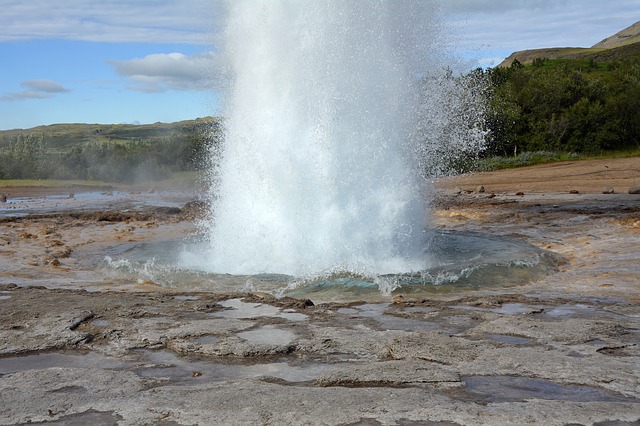
The Strokkur geyser has become a popular tourist attraction, replacing the less active Geysir geyser since the turn of the 20th century.
Located near the Geysir geyser, Strokkur geyser spews out hot water at a frequency of every 5 to 10 minutes.
The boiling water rises to a moderate height of 20 meters.
For more information on the Strokkur geyser, please refer to this article.

Conclusion
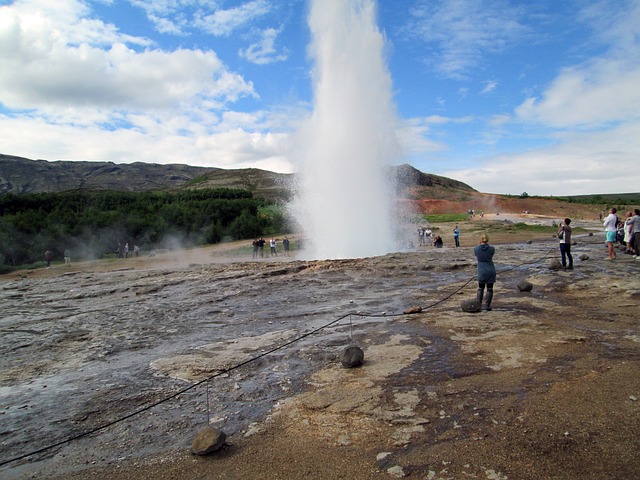
While Northern Europe has a strong image of being a land of snow and glaciers, Iceland has a different image as a volcanic powerhouse, with geysers and hot springs similar to those found in Japan.
The geothermal activity in Iceland is also active, making the climate relatively mild, and the number of people visiting Iceland for vacation is increasing.
Geysir geyser is another natural wonder where visitors can experience the dynamism of the earth, which is typical of Iceland, a volcanic country.
Although Geysir geyser has become less active in recent years and tours now focus on viewing the Strokkur geyser instead, it is still a must-see spot.
Although seeing the Geysir geyser, which erupts three times a day, depends entirely on luck, it is still worth a visit, as its water column rises up to 70 meters in height.

